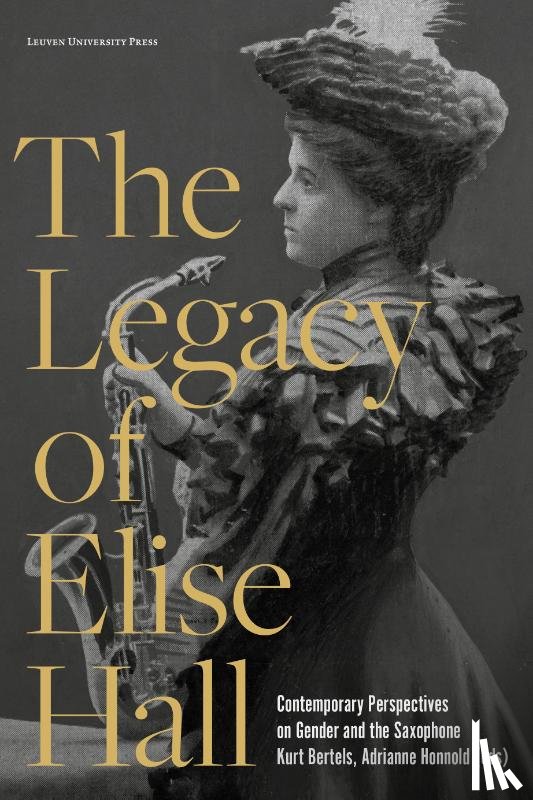Omschrijving
On the occasion of the 100th anniversary of the death of Elise Hall, a pioneering musician in the history of the saxophone The saxophone is a globally popular instrument, often closely associated with renowned players such as Charlie Parker, John Coltrane, or more recently, Kenny G. Less well known, however, is the historical presence of women saxophonists in the nineteenth century, shortly after the instrument’s invention. Elise Hall (1853–1924), a prominent wealthy socialite in Boston at the turn of the twentieth century, defied social norms by mastering the saxophone, an unconventional instrument for a woman of her time. Despite her career’s profound impact, Elise Hall remains relatively obscure in broader music communities. Her untiring work as an impresario, patron, and performer made a significant mark on the history of the instrument. Yet these contributions have been historically undervalued, largely due to gender bias.
This collection of essays, written by mainly women saxophonists/scholars, re-evaluates Elise Hall’s legacy beyond a discrete history, updating the narrative by highlighting the ways in which her identity and the saxophone itself have influenced historical accounts. By analyzing the sociocultural factors surrounding this innovative musician through a contemporary lens, the contributors challenge previously held narratives shaped by patriarchal structures and collectively affirm her place as one of the pioneers in the history of the saxophone. The saxophone is a globally popular instrument, often closely associated with renowned players such as Charlie Parker, John Coltrane, or more recently, Kenny G. Less well known, however, is the historical presence of women saxophonists in the nineteenth century, shortly after the instrument’s invention. Elise Hall (1853–1924), a prominent wealthy socialite in Boston at the turn of the twentieth century, defied social norms by mastering the saxophone, an unconventional instrument for a woman of her time. Despite her career’s profound impact, Elise Hall remains relatively obscure in broader music communities. Her untiring work as an impresario, patron, and performer made a significant mark on the history of the instrument. Yet these contributions have been historically undervalued, largely due to gender bias.
This collection of essays, written by mainly women saxophonists/scholars, re-evaluates Elise Hall’s legacy beyond a discrete history, updating the narrative by highlighting the ways in which her identity and the saxophone itself have influenced historical accounts. By analyzing the sociocultural factors surrounding this innovative musician through a contemporary lens, the contributors challenge previously held narratives shaped by patriarchal structures and collectively affirm her place as one of the pioneers in the history of the saxophone. 9 List of Figures, Music Examples, and Tables
11 Acknowledgments
Introduction
15 Rethinking Elise Hall’s Legacy
Kurt Bertels & Adrianne Honnold
PART I. Histories
29 “Incomparable Virtuoso”: A Reevaluation of the Performance Abilities of Elise Boyer Hall
Andrew J. Allen
57 Paying and Playing? Elise Hall and Patronage in the Early Twentieth Century
Kurt Bertels
PART II. Critical Organology & Social Identity
81 Exhuming Elise: Rehabilitating Reputations
Adrianne Honnold
105 Instruments Telling History: Engaging Elise Hall through the Saxophone
Sarah McDonie
PART III. Beyond Elise Hall: Gender, Media & Culture in the 1920s
127 “He puts the pep in the party”: Gender and Iconography in 1920s Buescher Saxophone Advertisements
Sarah V. Hetrick
153 Intersections of Gender, Genre, and Access: The Enterprising Career of Kathryne E. Thompson
Holly J. Hubbs
Epilogue
177 Elise Hall and the Saxophone: Updated Narratives and Future Considerations
Kurt Bertels & Adrianne Honnold
185 About the Authors
187 Index


